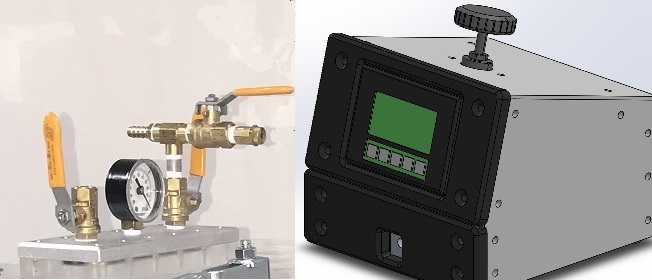Vacuum Controller Instruments
Vacuum Controller Instruments are devices that keep the vacuum inside a chamber within a certain value or level. When a vacuum is pulled, the vacuum pump will usually simply keep pulling vacuum from ambient to the maximum level the vacuum pump is capable of achieving. However, there are times when you would want to have your vacuum stable and holding at a certain level or a specific range – say keeping the vacuum between 4 Torr and 5 Torr. In that case, you will need a vacuum controller to do so.
First off, yes, you can manually adjust the vacuum levels in your vacuum chamber by simply opening the vacuum valve and closing it right after you have reached your desired vacuum level. Of course, there will be a certain drift that you will experience, the vacuum will slowly decrease) at about 0.02 Torr to 0.1Torr per minute) You will have to keep an eye on your vacuum gauge in order keep your process within the correct range because every time the vacuum drifts up, you will have to pull more air in order to bring it back to your level.
There are three different ways to control a vacuum in your vacuum chamber: 1. Bleed Valve, 2. Vacuum Regulation, 3. Vacuum Control.
A bleed valve is a valve that is set to a certain flow rate. As you pull your vacuum, the air will flow through the bleed valve and add air to stabilize the vacuum level. A bleed valve is very popular on vacuum bubble leak testers because it is a very simply way to control the vacuum. One drawback is that vacuum pumps do not like to be running close to ambient continuously meaning that the bleed valve constantly adding air to the system may decrease the lifetime of the vacuum pump. In cases such as short bubble leak tests, this concern is negligible.
A vacuum regulator works similarly to the concept of a pressure regulator. A diaphragm and a spring control/regulate the pressure on one side of the regulator. A drawback of a bleed valve and regulator is that a vacuum regulator is only intended to be used in the rough vacuum range.
A vacuum controller is a bit more complex but much more accurate as the controller is specifically designed to operate at higher vacuum levels. A vacuum controller has circuitry to open or close the vacuum and venting valves in order to keep the vacuum at a steady level. Furthermore, the rate of vacuum venting can also be adjusted in order to create a vacuum profile so that a certain recipe can be created.
